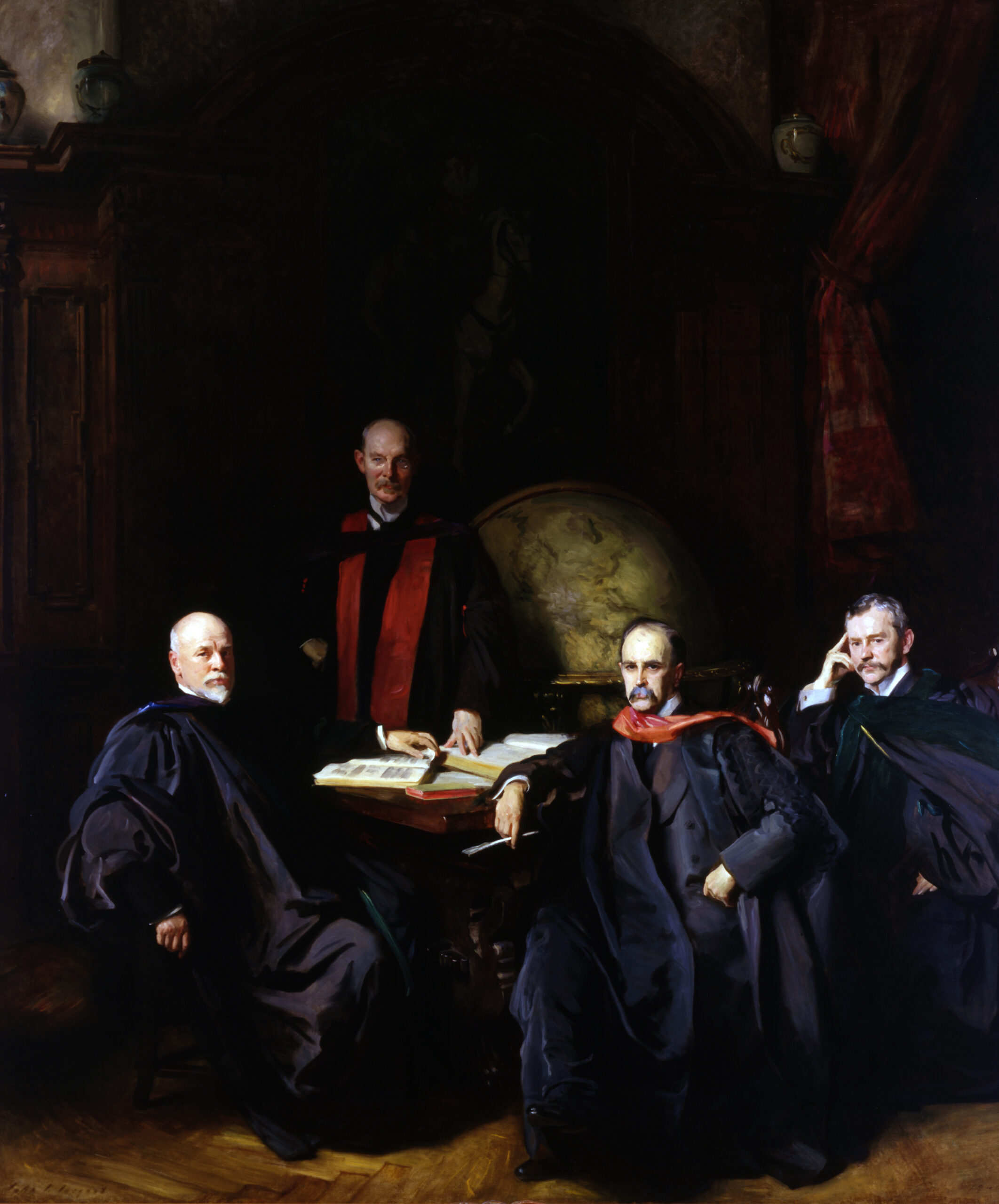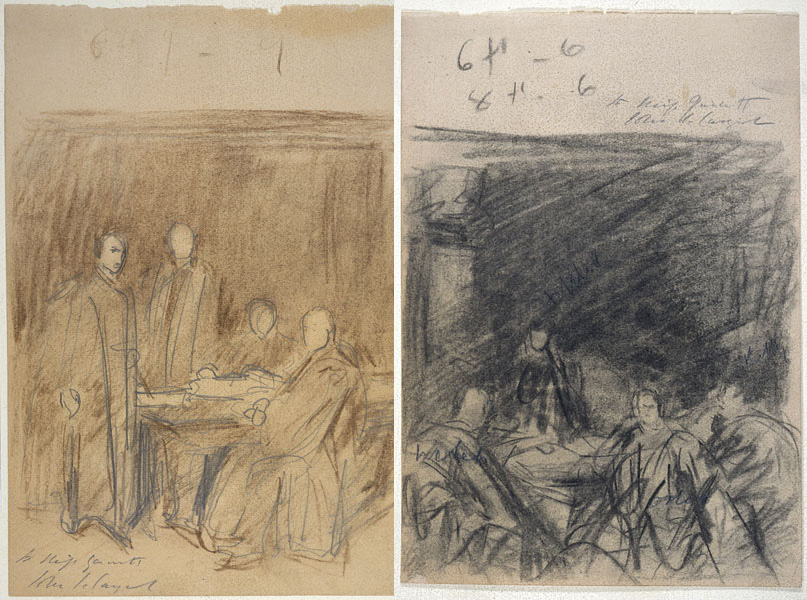The Four Doctors

The Four Doctors
- Artist:
- John Singer Sargent
- Date:
- 1906
- Medium:
- Oil on canvas
- Dimensions:
- 10.75 x 9.5 ft.
The Four Doctors
1906
In 1903, Mary Elizabeth Garrett, founding benefactor of the Johns Hopkins University School of Medicine, commissioned John Singer Sargent to paint a group portrait of the school’s faculty she most admired: William Henry Welch, William Stewart Halsted, William Osler, and Howard Atwood Kelly. Although there were other eminent members of the school’s first faculty, Garrett had greater contact and communication with these four. Since 1902, Garrett had pressed Sargent to undertake the commission for both her own portrait and that of the faculty group. Being one of most sought-after portrait artists of the era, he at first was reluctant to undertake the commissions due to a full schedule of commitments. When Sargent finally acquiesced, he agreed to begin her portrait but stipulated that the group portrait would have to be delayed until he had more time. University officials discussed raising funds to share in the cost of the commission, but ultimately took no action. Garrett assumed the full cost of the $10,000 commission.
Garrett wrote to the four physicians in February, 1903, extending invitations to sit for the Sargent portrait. Each responded readily with enthusiasm and gratitude for the honor of being included. Their letters survive in the Mary Elizabeth Garrett Collection at the Bryn Mawr College Archives. Welch, always statesmanlike, sent an eloquent response in which he acknowledged the significance of Garrett’s contributions to the establishment of the medical school.
Arrangements were negotiated to schedule the sittings for June, 1905 at Sargent’s Tite Street studio in London. By that time Osler was in residence at Oxford as the Regius Professor of Medicine. Halsted, Welch, and Kelly traveled from Baltimore to join Osler for the sittings. On the occasion of the first group sitting, Garrett sent the four doctors and Sargent a telegram wishing them well. After the sessions with Sargent, Osler’s wife Grace would frequently dine with the four sitters and they would regale her with commentary about the progress of each other’s portraits. Fortunately, Grace Osler recounted some of their lively remarks in letters to her mother in Boston. Transcriptions of these letters are held in the Osler Library at McGill University.
Sargent struggled with the composition of the group, and sent sketches to Garrett for her comment. With the group portrait near completion in June, 1906, he wrote to Welch that Garrett is “well pleased” with the painting but that before her he always felt “like a rabbit in the presence of a boa constrictor.”

For uniformity, Sargent directed the four physicians to wear their academic robes. This choice of garb brought the medical men out of clinics and laboratories, portraying them as learned academics. Sargent went on to create a rich cultural setting in which to place the four figures. To increase the height of the composition, Sargent installed a painting of Saint Martin and the Beggar by the son of El Greco in the background. He brought a large Venetian globe into his studio to counterbalance the figure of Halsted, and introduced a literary reference by adding his own 1515 volume by the Italian humanist and poet Petrarch as a support for Welch’s arm. Sargent used these props to enhance the composition, to convey the learnedness of the subjects, and to show their cultural sophistication.
When Sargent completed the portrait in 1906, he first exhibited it at the Royal Academy in London to the wide acclaim of critics. After the exhibit, the painting was shipped to Baltimore where Garrett presented it to The Johns Hopkins University on January 19, 1907 at McCoy Hall. President Remsen accepted the painting on behalf of the university trustees. Welch gave an amusing talk on the experiences he and his colleagues had as participants in Sargent’s creative process. Mr. Royal Cortissoz, art critic of the New York Tribune, delivered a lecture on Sargent’s merits as an artist. Following the dedication, both the portraits of Mary Elizabeth Garrett and the four doctors went on exhibit at the Corcoran Gallery of Art and at the Carnegie Institute.
When the paintings returned to Baltimore they were installed in the Donovan Room of McCoy Hall at the university’s first campus in downtown Baltimore. After Gilman Hall was built on the Homewood campus in 1916, the portraits were placed in the main reading room. In 1929, both paintings were moved to the Great Hall of the newly built Welch Medical Library where they still reside. Garrett’s persistence and Sargent’s talents created a lasting legacy for these four early faculty members. The Four Doctors has since become an iconic image representing the founding of the school of medicine.
"*" indicates required fields
